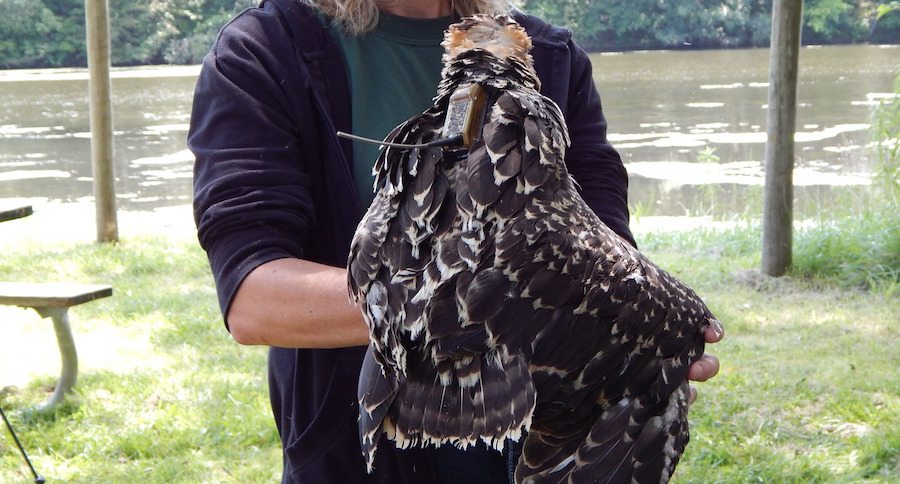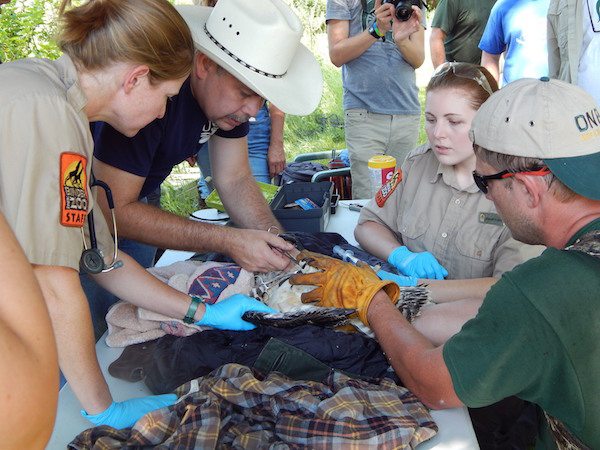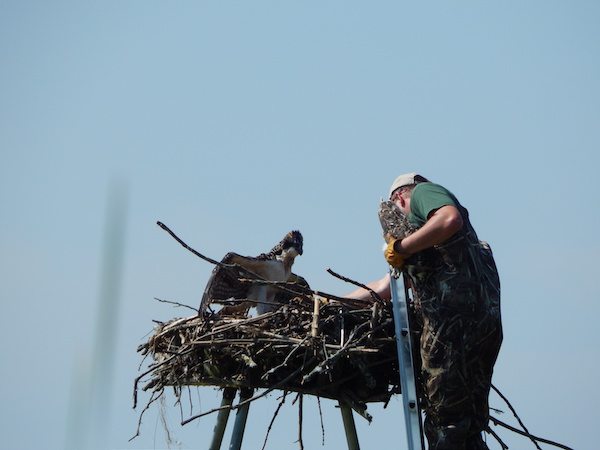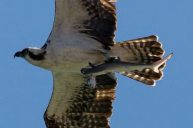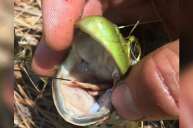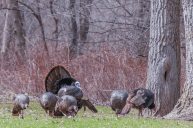Four osprey chicks in Michigan were outfitted with GPS telemetry backpack units earlier this year.
The backpacks will help scientists track the osprey chicks on a daily basis and seasonally.
"We are very excited to have this opportunity to place GPS units on several ospreys this year," says Julie Oakes, Michigan Department of Natural Resources wildlife biologist. "This will not only provide the DNR with information on what migration routes the birds take, but will also give us insight into the perils they must endure on their migration."
Pesticides, like DDT, and habitat loss nearly wiped out ospreys in Michigan. The backpacks are part of revitalization efforts taking place in the southern part of the state.
The four osprey chicks were hatched on platforms in three locations. These were Michigan State University's Lux Arbor Reserve in Delton, Kensington Metropark in Milford and on Fletcher's Pond near Alpena.
Unfortunately, one of the osprey chicks fell victim to a common danger for young birds: predators. A great horned owl got to the chick, which came from Kensington Metropark.
Officials were able to retrieve the backpack for future use.
The program does work, officials say, and anyone can monitor the birds' movements on the Michigan Osprey website.
A chick that received a backpack in 2014 returned to the Midwest in 2016. Tracking shows the bird spent two winters in Colombia before returning to the United States.
The Michigan DNR started relocation efforts in 1998. They moved chicks from northern to southern Michigan over 10 years.
"This is a true wildlife success story," says Oakes. "Each year we have new nests, and we have already exceeded our original goal of 30 active nests by 2020. We have been able to remove ospreys from the threatened species list to a species of special concern and restore their numbers in Michigan."
NEXT: MICHIGAN NOW REQUIRES PERMITS FOR PROFESSIONALLY PROCESSING WILD GAME
WATCH
https://rumble.com/embed/u7gve.v3v6u1/
